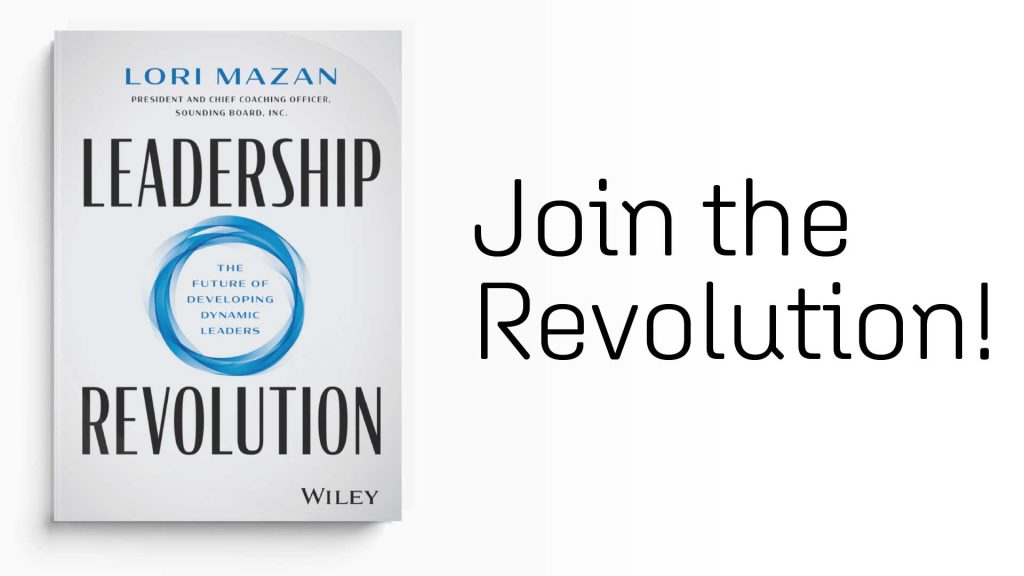Earlier this month, Sounding Board led a fascinating discussion with some of the area’s top HR talent about the relationship between executive teams and HR leaders. Our own Christine Tao led a Redpoint Ventures panel called Building Your Strategic Leadership Muscle, where HR experts explored the crucial role of Chief People Officers in modern business settings.
The Chief People Officer role is quickly becoming a crucial position in any organization, so it’s no surprise Redpoint’s event was packed. We’ve summarized our favorite leadership insights from Bitgo VP of HR Duncan MacMurdy, Brandless Head of People & Places Michele Bousquet, and Redpoint Managing Director Alex Bard.
Insight #1 – Traits to look for in an excellent People hire
Chief People Officers and HR leaders are increasingly essential to managing talent demands for today’s businesses. But what if you don’t have an HR leader? How can you recognize an especially talented CPO? According to Redpoint’s Alex Bard, the trick is to avoid over-emphasizing technical-heavy compliance skills. Instead, you want passionate people who can set the tone for an entire organization.
“There are two fundamental functions of the people role,” Bard explained. “It’s not just compliance, although you’ve got to get that right. It’s all the other stuff that creates the company’s heartbeat. It’s what enables people to have visibility into what they’re doing, be passionate about what they’re doing, be aligned to the mission of the company. It’s critically important.”
That sounds great on paper, but what does it mean in practical terms? Bard noted that curiosity, learning, and a passion for people are foundational elements for great leaders. These elements should all be higher priorities than HR compliance — if for no other reason that an excellent CPO can hire compliance experts. An open-minded individual who can locate the best talent for your organization is far more valuable.
“I’d look for somebody who’s really curious, not for somebody who has a thick playbook they’re going to drop into the organization,” Bard explained. “Who’s going to learn about the company, the founders, the work culture, and adjust their thinking to help that company be the best version of itself? That’s what we look for.”
Insight #2 – Hiring goals let you accomplish business goals
Far too often, core business goals are planned and implemented without consideration for the actual employees who must fulfill them. In reality, fulfilling business goals requires HR leaders who staff organizations with talented individuals.
“If you’re in a high growth company, it’s important to ask ‘Are you hitting your hiring goals?’” Bard noted. “If you don’t have enough capacity, whether it’s sales capacity, or engineering capacity, or support capacity, you’re not going to actually meet the goals for the year.”
Bard emphasized that hiring goals aren’t just about addressing new team members. They can also be about retaining and retraining high-value employees to fill leadership roles. “The flip side is, ‘What is your retention plan?’” he continued. “What are you doing to retain your employees? Are there regrettable losses? There should be natural turnover, but some are regrettable, especially when it includes people from high performing categories inside your company. It’s not popular to talk about retaining people, but it’s important to understand where people fall in the organization in the spirit of coaching them up.”
Insight #3 – Lead from the heart
Leadership is not a purely intellectual task. There are always emotional components to running a company, especially during difficult times. Being ruthless doesn’t necessarily create a stronger organization, but HR leaders who lean into emotional intelligence skills can bring teams closer together.
“We are always battling for people’s minds and hearts,” Bitgo’s Duncan MacMurdy said. “This emotional piece is the glue. That’s what brings people to work. The relationships that our colleagues have is a contribution someone is making to the team. This is super important stuff to people.”
Understanding the emotional state of employees isn’t always easy. For many leaders, it’s a hard-earned skill that comes from experience, not training. But when HR leaders do leverage these skills, the contributions of entire teams can improve dramatically.
“I’ve seen so many engineering leaders who are well tuned emotionally to their organizations,” MacMurdy continued. “I’ve seen them lead, especially in crisis. I’ve seen them lead with their hearts. People really, really appreciate that. It makes a big difference to your capacity to lead in a tough situation.
“You don’t choose your conditions of leadership. Everybody’s great at being a leader when it’s sunny out. But when there’s a storm, that’s when it’s really hard. That’s when the emotional piece of an HR leader’s job is to make connections with executives and team members that matter.”
Insight #4 – Setting the tone for productive conflict
Anyone who manages a business of any size will admit that conflict is inevitable — but sometimes that’s a good thing. A good leader must recognize the difference between productive and unproductive conflict and try to encourage the former where possible.
“There’s two extremes of conflict,” Alex Bard claimed. “There’s conflict where you’re yelling at people in an ill-spirited way. The other side is conflict where you don’t say anything, which is equally bad. You want the middle place of conflict, because that’s where good ideas and different viewpoints come from, and you can move the organization forward.”
Many leaders already accept and embrace this insight, but we should remember that executive teams set the tone for how conflict is managed. By establishing a foundation of vulnerability and trust, leaders encourage frank discussions that ultimately resolve conflict. “I think it starts at the top,” Bard continued. “The executive team really models behavior for the rest of the company, whether you know it or not. So the executive team can provide this concept of vulnerability-based trust — where I can express an emotion, and trust the leader will take care of it. With a foundation of vulnerability-based trust, you can actually have a conflict on top of that.”
Insight #5 – Acknowledgement is a cost-effective way to build positive work culture
While “leading from the heart” or “modeling good behavior” works on principle, new leaders might need practical starting points for building a positive work culture. Here’s a simple yet powerful approach: find ways to acknowledge the good work of team members.
“We built a peer-to-peer recognition program that’s probably the most beloved aspect of brand culture right now,” Michele Bousquet noted. “There must have been 40 awards given in one day last week, and it was heartwarming to see the impact on our teams. It moves the needle way more than some huge job architecture program, because it had heart and met people where they were.”
Recognition programs have measurable impacts on morale, but they’re also cost-effective. Acknowledging and rewarding hard work is often free, and helps employees feel valued by peers and leaders alike.
Insight #6 – Employees benefit most from a formal performance management program
Professional development is not especially effective if it is presented casually, or as an afterthought. Having a formal performance management program with concrete measures is preferable — and if you don’t have one, employees might just demand it themselves.
“Starting out, I greatly underestimated how important it was for people to get like a formal performance management program,” Michele Bousquet admitted. “At GoPro, for example, it was just not on my radar, but we heard it really loudly. Team members not only wanted the opportunity to understand how they could grow, but really wanted actionable feedback.”
One red flag, however, is to be wary of performance management programs that act as checklists. Anything with concrete results will be far more impactful. “I really don’t think it’s effective to have a full portfolio of achievements that no one in the business could tell you about,” Michele continued. “That is not actually improving performance or people’s daily life experience. It’s very low importance to me that people think ewe did 45 programs, but high importance that the ones we did move the needle.”
Insight #7 – Never underestimate the benefits of executive coaching
When developing an organization’s talent, it’s easy to overlook executive coaching. Yet as potential leaders climb an organization’s ranks, it’s crucial to make leadership skills a priority. As the co-founder of Sounding Board, this is something Christine knows first hand.
“There are clear benefits in giving support to CEOs, their co-founders, and then the executive team. That is just such a challenging role with so many things you have to handle,” Christine explained. “Coaching used to be something that was done in dark corners before you actually manage the organization. I think the conversation around that has completely shifted where leaders talk about the impact they have, and really doubling down on that executive to make sure they’re really successful.”
Industries have started to acknowledge the myriad benefits executive coaching offers. The VC community has been especially supportive in recent years, but existing leaders themselves are encouraging the practice for new managers. “When those executives go through that experience, and they understand the impact it has, you see them also wanting to bring that model to folks across your organization,” Christine continued.
We would like to thank Duncan, Michele, Alex, and everyone at Redpoint Ventures who made this event such a success. Thank you for the fascinating HR leadership insights!
If your organization needs help coaching its leaders, contact us to learn how we combine best-in-class coaching with a robust technology platform and a proprietary, outcome-based methodology to help companies grow their next generation of leaders.











